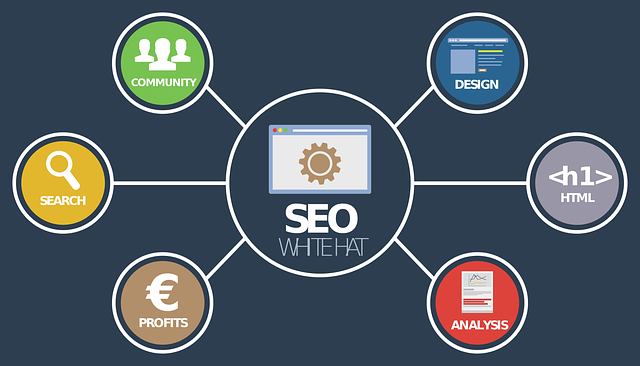AI staff performance analytics dashboards have transformed workforce management by leveraging machine learning to analyze vast data points from individual employee metrics to team dynamics. These tools provide intuitive visual insights, helping HR professionals and managers identify trends, improve areas, and make informed decisions. By highlighting top performers, uncovering knowledge gaps, and predicting future skills needs, these dashboards foster high-performance cultures, enhance engagement, streamline workflows, and drive business growth by aligning the workforce with strategic goals. Recommendation engines powered by AI can further revolutionize staff performance through personalized insights and predictions, integrated into analytics dashboards using techniques like collaborative filtering for targeted training programs. Effective development considers data quality, algorithm selection, workflow integration, and continuous model refinement based on user feedback.
In today’s data-driven landscape, AI business recommendation engines are transforming operations. This article explores how AI staff performance analytics can unlock valuable insights, enhancing decision-making. We delve into building effective recommendation engines, discussing techniques and considerations crucial for success. Additionally, we highlight the power of visual communication through AI staff performance analytics dashboards, enabling users to navigate complex data effortlessly. By leveraging these tools, organizations can drive efficiency, optimize resource allocation, and gain a competitive edge.
- Understanding AI Staff Performance Analytics: Unlocking Business Insights
- Building a Recommendation Engine: Techniques and Considerations
- Implementing Dashboards for Effective Visual Communication of Data
Understanding AI Staff Performance Analytics: Unlocking Business Insights

AI staff performance analytics dashboards have transformed how businesses measure and optimize their workforce efficiency. These tools leverage machine learning algorithms to analyze vast amounts of data, from individual employee metrics to team dynamics, providing actionable insights that were previously hard to decipher. By presenting this data in intuitive visual formats, AI dashboards empower HR professionals and managers to quickly identify trends, pinpoint areas for improvement, and make data-driven decisions.
Unlocking these business insights is crucial for fostering a high-performance culture. Dashboards can highlight top performers, reveal knowledge gaps, and even predict future skills needs based on current performance patterns. This proactive approach allows organizations to enhance employee engagement, streamline workflows, and ultimately drive business growth by ensuring their workforce aligns with strategic goals.
Building a Recommendation Engine: Techniques and Considerations

Building a recommendation engine is a complex task that leverages AI and machine learning algorithms to analyze vast amounts of data and provide personalized suggestions. In the context of business operations, an AI-powered recommendation system can significantly enhance staff performance by delivering tailored insights and predictions. These engines often employ techniques like collaborative filtering, content-based filtering, or hybrid approaches to understand user preferences and behavior. For instance, in staff performance analytics dashboards, a recommendation engine could suggest targeted training programs based on individual strengths and areas of improvement identified through data analysis.
Considerations during development include ensuring data quality and privacy, choosing appropriate algorithms for the specific use case, and integrating the system seamlessly into existing workflows. Additionally, evaluating model performance using relevant metrics and continually refining it based on user feedback is crucial to creating an effective recommendation engine. By balancing these factors, businesses can harness the power of AI to optimize staff performance and decision-making processes.
Implementing Dashboards for Effective Visual Communication of Data

Implementing AI-driven staff performance analytics dashboards is a game-changer for businesses seeking to optimize operations and foster growth. These dynamic visual communication tools transform raw data into actionable insights, enabling managers to quickly identify trends, spot areas for improvement, and make informed decisions. By presenting complex information in intuitive graphs, charts, and metrics, dashboards empower leaders to track key performance indicators (KPIs) related to staff productivity, engagement, and training effectiveness.
Effective AI staff performance analytics dashboards streamline workflows by centralizing critical data points in one accessible location. This real-time visibility not only enhances decision-making processes but also promotes transparency and accountability throughout the organization. Moreover, these interactive tools facilitate collaboration among teams, allowing stakeholders to share insights, discuss findings, and jointly drive strategic initiatives for continuous business improvement.
AI staff performance analytics, combined with powerful recommendation engines, offers businesses an innovative way to optimize operations. By leveraging data-driven insights from AI, organizations can enhance decision-making and employee productivity. Implementing tailored dashboards for visual representation of these analytics allows stakeholders to quickly grasp key metrics and trends, fostering a data-centric culture. These tools, when developed and integrated effectively, have the potential to revolutionize business strategies, ensuring competitive advantage in today’s digital landscape through enhanced AI staff performance analytics dashboards.
